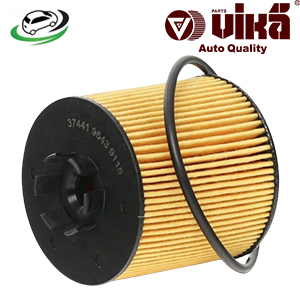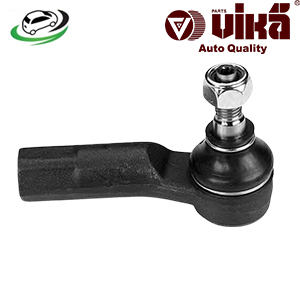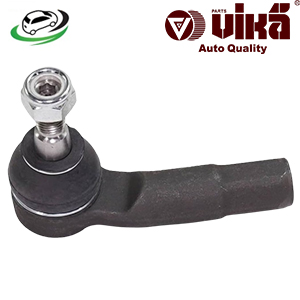-16%
Get Front Left Outer Tie Rod End AUDI Q3 / VW Beetle/Jetta VI/Passat B6/Tiguan 1 & 2 1K0423811G
Tie rod ends are crucial components in a vehicle’s steering system, playing a significant role in ensuring proper control and stability while driving. These small yet vital parts connect the steering rack to the steering knuckle on each front wheel. Understanding their function, design, and maintenance can help in diagnosing steering issues and ensuring a smooth and safe driving experience.
Function and Importance
The primary function of tie rod ends is to transmit the force from the steering rack to the steering knuckle, allowing the wheels to turn as the driver steers the vehicle. This action facilitates the directional control of the vehicle. Without tie rod ends, the steering mechanism would not be able to convert the rotational motion of the steering wheel into the linear motion required to turn the wheels.
In terms of importance, tie rod ends are directly linked to the vehicle’s alignment and handling. Properly functioning tie rod ends ensure that the wheels are aligned correctly, which is crucial for maintaining tire longevity and ensuring safe handling characteristics. Misaligned or worn-out tie rod ends can lead to uneven tire wear, poor steering response, and potentially hazardous driving conditions.
Construction and Types
Tie rod ends are typically constructed from durable materials such as steel to withstand the stresses and strains of steering. They consist of a ball joint enclosed in a protective rubber or polyurethane boot. The ball joint allows for the necessary pivoting and rotational movements to accommodate the changes in steering angles.
There are two primary types of tie rod ends:
- Inner Tie Rod Ends: These are located on the inside of the steering mechanism, connected to the steering rack.
- Outer Tie Rod Ends: These are located on the outside, connecting the inner tie rod ends to the steering knuckle.
Both types work in conjunction to ensure precise steering and handling.
Signs of Wear and Symptoms
1. Steering Wheel Vibration
One of the most common signs of worn tie rod ends is a noticeable vibration in the steering wheel. This vibration is often felt while driving at higher speeds and can indicate that the tie rod ends are no longer holding the wheels steady. The vibration may start off mild but can become more pronounced as the tie rod ends continue to wear.
2. Uneven Tire Wear
Worn tie rod ends can cause misalignment of the wheels, leading to uneven tire wear. This is because the tie rod ends are essential for maintaining the correct alignment of the wheels. When they are loose or damaged, the wheels can become misaligned, causing one side of the tire to wear down more quickly than the other. Regularly checking tire tread for uneven wear patterns can help identify this issue early.
3. Loose or Unresponsive Steering
If the steering feels loose or unresponsive, it could be a sign that the tie rod ends are worn. This symptom is characterized by a lack of precise control when turning the steering wheel. The vehicle may feel as if it is wandering or drifting on its own, requiring constant corrections from the driver to maintain a straight path. This can be particularly noticeable at higher speeds or during maneuvers that require precise steering input.
4. Clunking or Knocking Noise
Unusual noises coming from the front end of the vehicle, especially when turning or driving over bumps, can indicate that the tie rod ends are worn or damaged. These noises are often described as clunking or knocking sounds and are caused by the looseness or play in the tie rod ends. The noise can become more pronounced over time as the wear progresses.
5. Difficulty Steering
As tie rod ends wear out, steering the vehicle can become increasingly difficult. The steering may feel stiff or require more effort to turn the wheel. This symptom can be particularly noticeable when making low-speed turns or parking the vehicle. Difficulty steering is a serious issue that should be addressed promptly to avoid potential safety hazards.
6. Excessive Play in the Steering Wheel
Excessive play or movement in the steering wheel can be a clear indicator of worn tie rod ends. This symptom is characterized by a feeling of looseness or slack in the steering wheel, often accompanied by a delay in the vehicle’s response to steering inputs. This can make it challenging to maintain control of the vehicle, particularly in emergency situations where quick steering response is needed.
7. Poor Vehicle Alignment
Worn tie rod ends can lead to poor vehicle alignment, which can manifest as the vehicle pulling to one side while driving. This issue can cause the vehicle to drift or veer to the left or right, requiring the driver to constantly adjust the steering to keep the vehicle traveling straight. Poor alignment not only affects handling but can also lead to increased tire wear and reduced fuel efficiency.
Diagnosis and Inspection
Diagnosing issues with tie rod ends typically involves a visual inspection and physical testing. Here are steps commonly taken by mechanics:
- Visual Inspection: Look for visible damage to the tie rod ends, such as torn or damaged boots, corrosion, or obvious looseness.
- Physical Testing: By lifting the vehicle and manipulating the wheels, mechanics can check for excessive play in the tie rod ends. Any significant movement could indicate wear.
Replacement and Maintenance
Replacing tie rod ends is a relatively straightforward process but requires precision to ensure proper alignment:
- Preparation: Secure the vehicle on jack stands and remove the wheels to access the tie rod ends.
- Remove Old Tie Rod Ends: Loosen the nuts and bolts holding the tie rod ends in place. A tie rod end puller or separator tool may be necessary to remove the ends from the steering knuckle.
- Install New Tie Rod Ends: Install the new tie rod ends, ensuring they are properly tightened and secured. It’s crucial to count the number of turns when removing the old tie rod ends to match the same position with the new ones, helping to maintain alignment.
- Alignment: After replacing tie rod ends, a professional wheel alignment is recommended to ensure proper vehicle handling and tire wear.
Maintenance Tips
- Regular Inspections: Periodically inspect the tie rod ends for signs of wear or damage, especially if driving on rough roads.
- Lubrication: Some tie rod ends are greasable, meaning they have fittings allowing for lubrication. Regularly lubricating these joints can extend their lifespan.
- Alignment Checks: Regular wheel alignment checks can help identify issues with tie rod ends before they become severe problems.
Follow us on Facebook for more parts.



